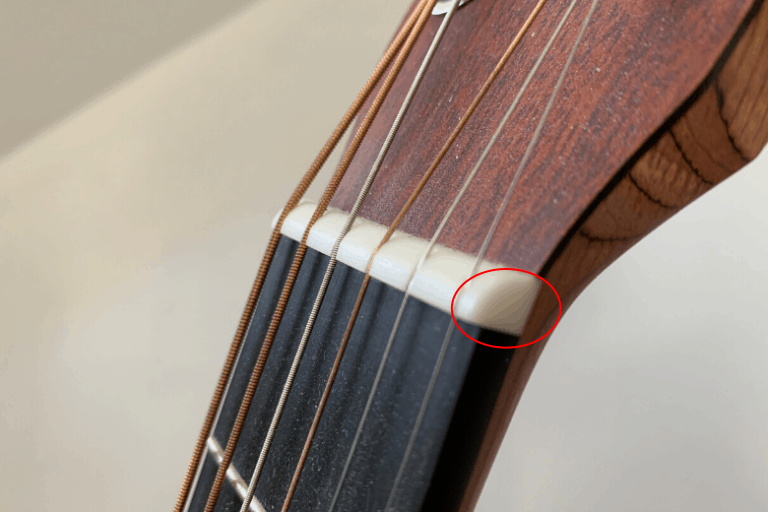I used a 3D printed nut for the rebec I posted in this community. PLA works best because of it's high stiffness, even better if it's PLA-CF. Make sure to add enough perimeters to not get hollow spaces in the nut.
If you manage to print it standing on its side (add a brim!), then the layer lines will follow string direction and the strings will glide better on the nut.
